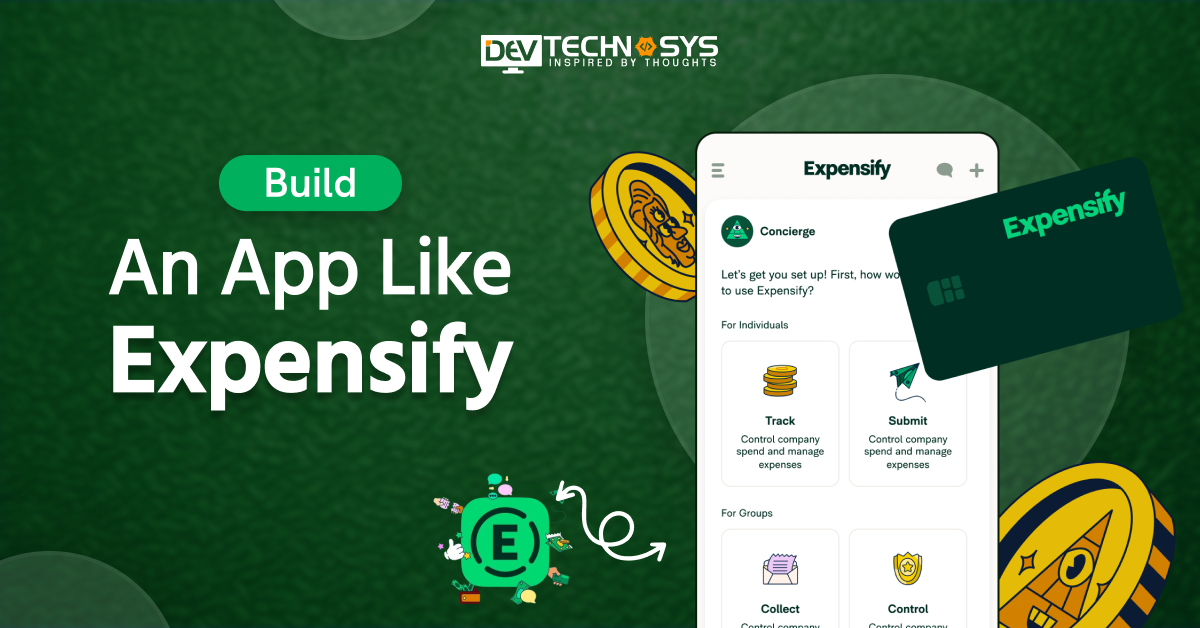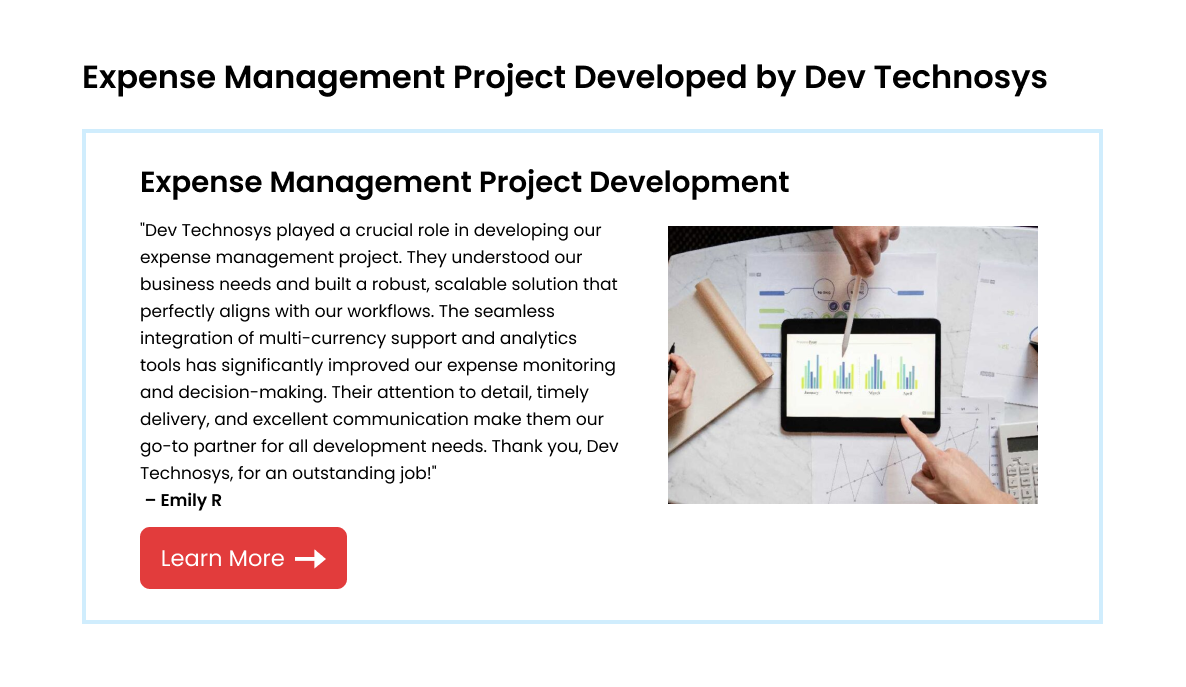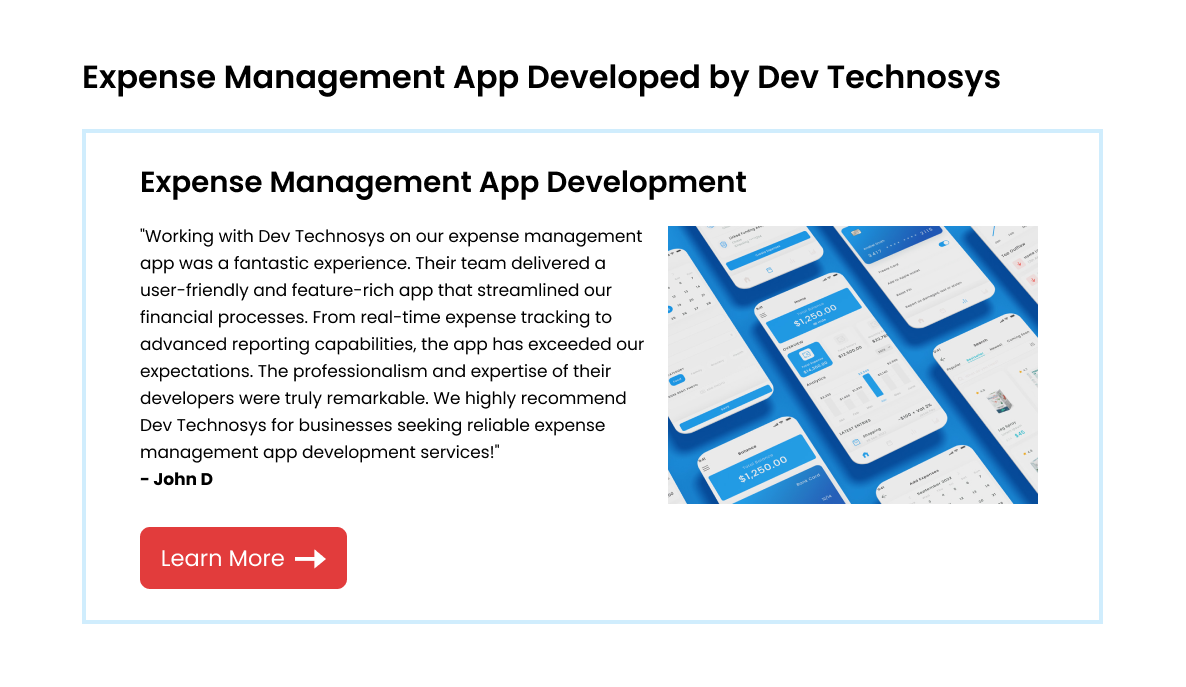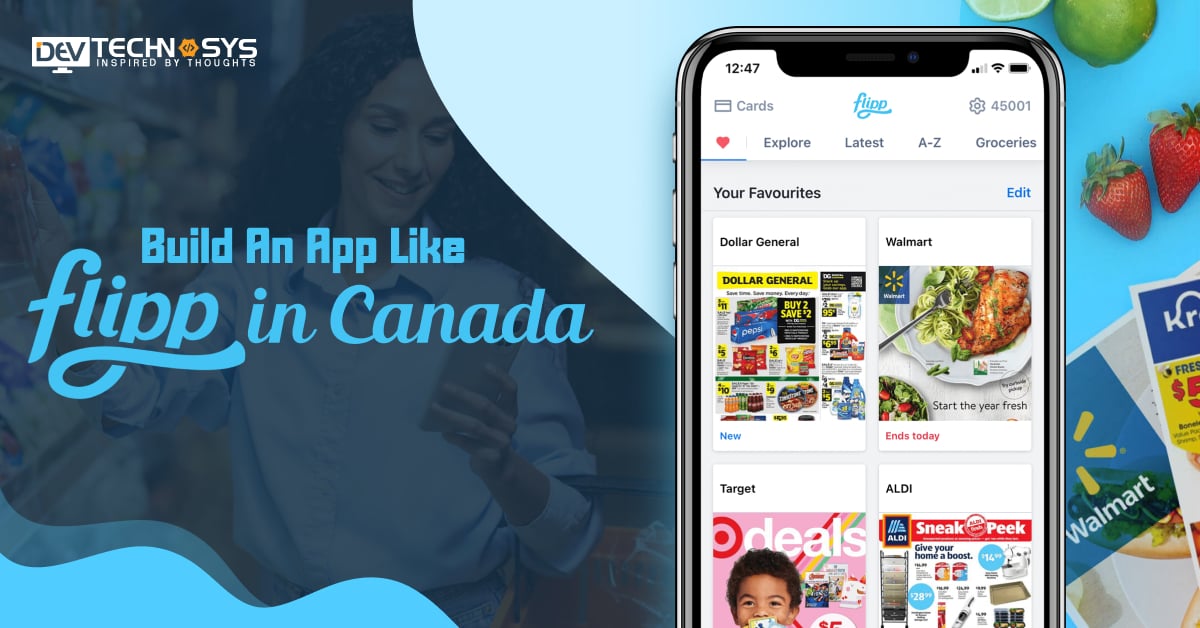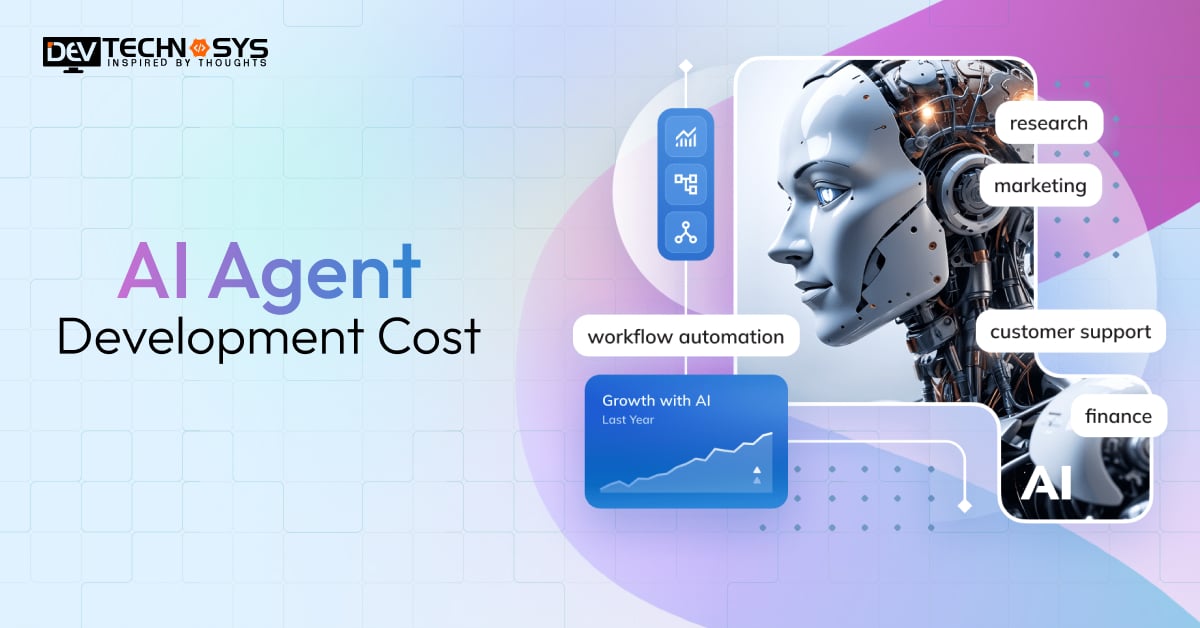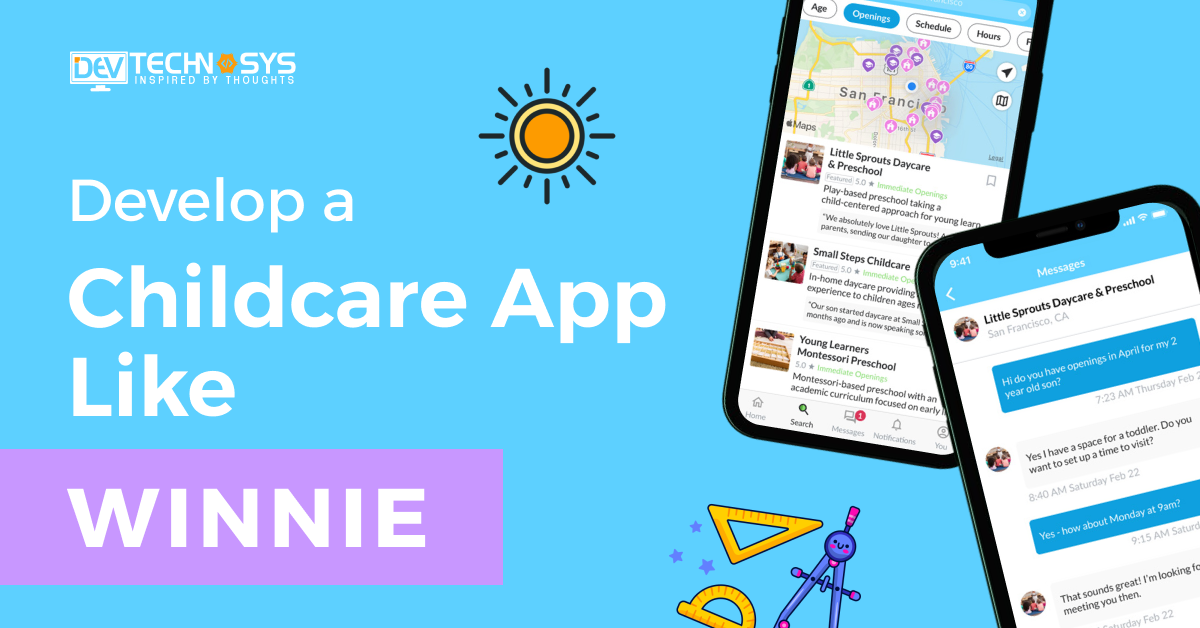Now, let us come to that world where a lot of expenses occur in real or digital life. Small businesses have issues like how they can manage their expenses and additional costs. Looking at the thousands of web pages and scrolling search engines, we found an app where businesses can manage their higher expenses easily called Expensify.
Businesses can upload expense reports, which allow them to track their daily expenses in real-time. These unique functionalities attract businesses to build an app like Expensify and reach new heights of success.
With a deep study, we found that expense management apps were valued at around $7.64 billion in 2024. And it is expected to increase to around $16.48 billion by the end of 2032.
Most businesses go with upper data because it shows rapid growth in investing in expense management software.
In this blog, we will explore how to build an app like Expensify and how it can help businesses manage their higher expenses.
Stay on!
What Is Expensify?
Businesses and individuals can track, manage, and report spending more effectively with the help of the Expensify app. Users may create expense reports, automatically extract data, and scan receipts with the app. It streamlines financial procedures by integrating with accounting programs like NetSuite, Xero, and QuickBooks.
Managers can examine and approve expenses instantly thanks to Expensify’s automation of the approval process. With capabilities like credit card input, payment gateway, mileage monitoring, and multi-currency compatibility, it may be used by both small and large businesses.
- App for managing business expenses streamlines cost tracking by enabling customers to scan receipts and automatically extract pertinent data, such as amounts and merchant details.
- Managers may examine, approve, and monitor spending in real-time, and users can easily produce and submit expense reports.
- For easy financial management, an app for managing monthly expenses connects with well-known accounting programs like NetSuite, Xero, and QuickBooks.
- The GPS-based automated mileage monitoring feature of the app enables users to precisely record their trip expenses.
Market Analysis of Expense Management Apps
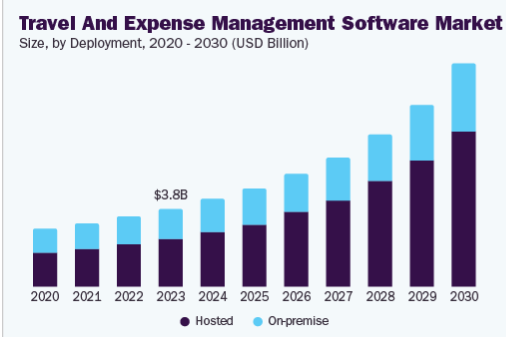
- According to the global market, expense management apps were valued at around $7.64 billion in 2024. And it is expected to increase to around $16.48 billion by the end of 2032.
- As per the recent reports, the expense management apps will grow around at a compound annual growth rate of 8% during the forecast period from 2025 to 2032.
- In a recent study, around 43% of businesses use expense management software to manage their additional expenses.
- According to a global study, North America holds the largest share of expense management apps.
- With deep research, expense management apps are also used to manage personal expenses.
Top 10 Expense Management Apps Like Expensify
Like Expensify, these apps offer a number of functions for managing, reporting, and tracking expenses. So, here we provide the top money management apps:
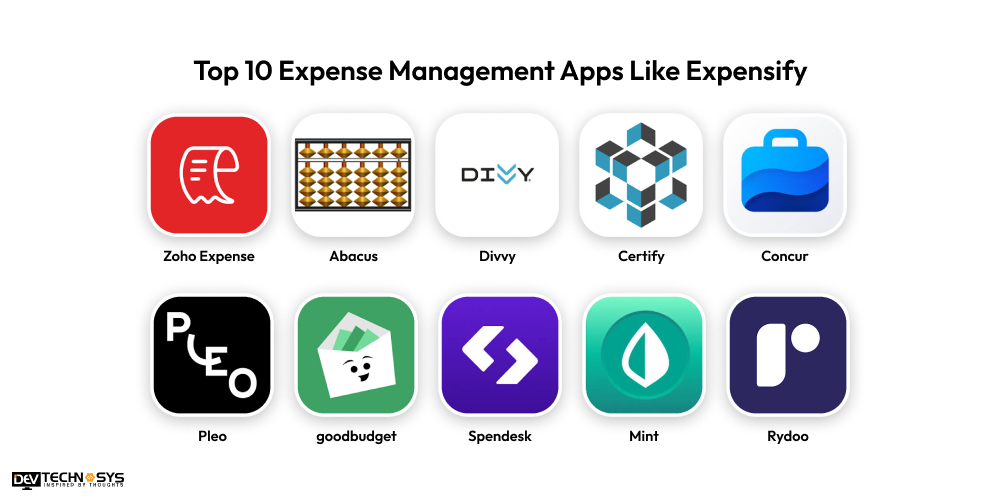
| Apps | Download Users | Stores Ratings | Apps Launched On | Platform Accessibility |
| Zoho Expense | 1M+ | 4.5 | 2014 | Android, iOS, Web |
| Concur | 1M+ | 4.4 | 2002 | Android, iOS, Web |
| Abacus | 50K+ | 4.7 | 2014 | Android, iOS, Web |
| Divvy | 100K+ | 4.5 | 2016 | Android, iOS, Web |
| Certify | 500K+ | 4.4 | 2008 | Android, iOS, Web |
| Pleo | 100K+ | 4.6 | 2015 | Android, iOS, Web |
| goodbudget | 500K+ | 4.7 | 2003 | Android, iOS, Web |
| Spendesk | 50K+ | 4.5 | 2016 | Android, iOS, Web |
| Mint | 100K+ | 4.6 | 2018 | Android, iOS, Web |
| Rydoo | 100K+ | 4.5 | 2012 | Android, iOS, Web |
Why Do Entrepreneurs Invest in Expense Management App Development?
Entrepreneurs invest in expense or banking app development for several key reasons, primarily to streamline operations, enhance financial control, and improve overall business efficiency. Here’s why these investments are valuable:
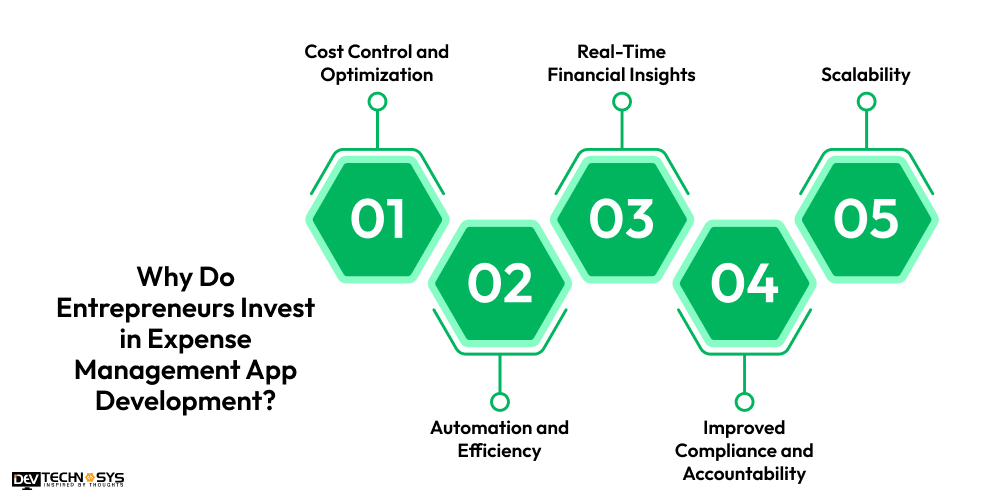
1. Cost Control and Optimization
The best expense management app allows businesses to monitor, control, and reduce unnecessary spending. By providing real-time visibility into expenses, these apps help entrepreneurs identify cost-saving opportunities and avoid budget overruns.
For small businesses and startups, controlling operational costs is critical for maintaining profitability and sustainability, making such apps a valuable tool in financial planning.
2. Automation and Efficiency
Manual expense tracking is time-consuming and prone to errors. Peer-to-peer payment apps offer automated data entry, approval workflows, and reporting, reducing administrative workload. This automation frees up time for employees to focus on more strategic tasks, improving overall operational efficiency.
Entrepreneurs recognize the importance of saving time on routine processes, which can be reinvested into scaling their business.
3. Real-Time Financial Insights
Business expense management apps provide entrepreneurs with real-time insights into their financial health. With access to detailed, up-to-date reports, entrepreneurs can make informed decisions quickly, adjusting strategies to align with cash flow trends.
This flexibility is essential for making timely, data-driven choices that impact business growth and financial stability.
4. Improved Compliance and Accountability
Businesses often struggle with ensuring compliance with internal financial policies and industry regulations. Expense management apps can be customized to enforce company policies, ensuring that employees follow set guidelines.
Budgeting apps like Albert can also maintain a record of transactions, making it easier to audit and comply with tax regulations, reducing the risk of fines or penalties.
5. Scalability
As a business grows, managing expenses becomes more complex. Expense management apps are designed to scale with a business, easily handling increasing transaction volumes without significant changes to the system.
This scalability ensures that entrepreneurs can continue using the app as they expand, saving on future costs for new software or systems.
How To Build An App Like Expensify?
Let’s start the discussion about the robust stage of development. It includes every step that leads the way to building a successful app. You have to consider these below stages because, without these steps, you can not build perfect applications. So, here we provide the successful mobile app development process:
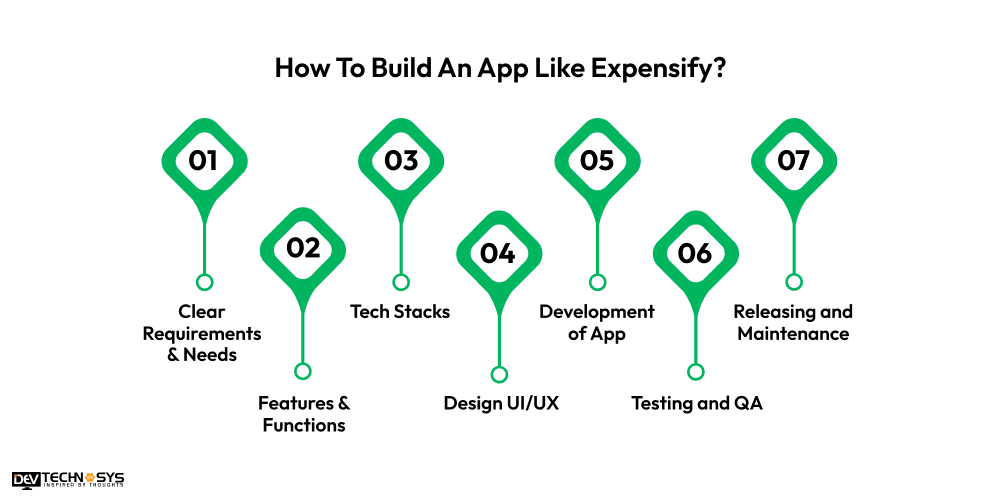
1. Clear Requirements & Needs
Let’s start the first stage of development. You have to identify your project requirements and needs to reduce confusion and data redundancy.
Businesses can also analyze the popular expensify app alternatives to see where they are standing and how rapidly they are growing. After that, you also need to make a plan for your competitors.
| What are your project’s basic or core needs and demands? |
| Define your future goals. |
| Which expense management apps are more successful in this competitive market? |
2. Features & Functions
Coming to the second stage of the development process. Make an organized sheet of features and functions, such as core or advanced features.
It includes many features, such as receipt tracking, reporting, receipt scanning, and tax compliance. Various features are higher cost, so integrate only features that are under the fixed development budget.
| What are your project’s core features? |
| Analyze the popular expense management apps. |
| Make a clear sheet of features and functions. |
3. Tech Stacks
Connect with the another stage of development. Hire dedicated developers to choose the best tech stacks for successful and efficient app development.
It includes various types of tech stacks such as APIs, testing methods, security methods, programming languages, designing tools, and more. It is one of the most crucial stage of overall app development process.
| Which type of tech stacks are used in your app development? |
| Define your scalability requirements. |
| Choose advanced or core tech stacks. |
4. Design UI/UX
Designing is one of the most important phases; it includes the user interface, and you need to design the app so that users attract more. A simple user interface allows customers or users to access the functionalities of the app and is easy to navigate.
A complex design can have higher costs, and it can easily fluctuate the overall development cost.
| Choose the best user interface design. |
| Analyze the existing expense management app design to get new design ideas. |
| Select the top designing tools, such as Adobe XD. |
5. Development of App
You have to hire mobile app developers to integrate the project’s various resources and ensure that all services are successfully implemented. It involves third-party integrations, designs, features, functions, and more.
Developers need to be very careful when the development phases occur and check after the implementation of the feature.
| Do you want to create hybrid or native apps? |
| Choose the experienced developers. |
| Implement a high number of features and functions. |
6. Testing and QA
Come to the second last stage of development. After the successful app development, the next step is to test the app under different phases. There are various types of testing methods, such as integration testing, security testing, unit testing, and more. After checking the overall quality of the app, make sure that the quality of the app is not decreased.
| Make sure that all features and functions are working properly |
| Use various testing methods such as security and integration testing. |
| Check the app’s security protocols. |
7. Releasing and Maintenance
It’s time to finish the development process. Hire experienced app developers from an on-demand app development company to successfully publish the app on the selected platforms.
After that, the post-maintenance services have to start, making sure that all the functionalities are working correctly.
| Publish your app on selected platforms like Android and iOS. |
| Assemble a team of experience developers to release the app. |
| Assign the post-maintenance phases to maintain the app’s performance. |
10 Must-Have Features of Expense Management Apps
To create a mobile app like Expensify, businesses may make better financial decisions, increase accuracy, guarantee compliance, and streamline their cost management process with these capabilities. Let’s take a look at the advanced features:
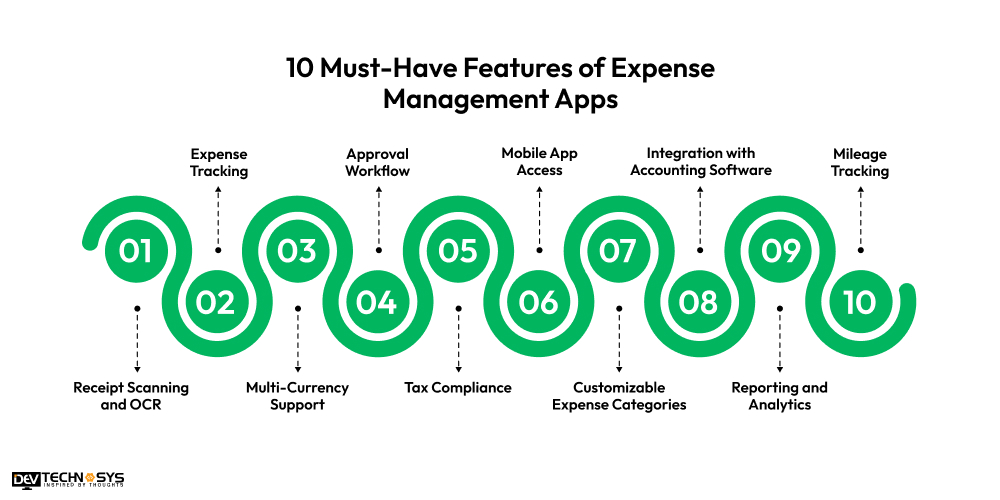
1. Receipt Scanning and OCR
The best expense manager app reduces the amount of human data entry by using optical character recognition (OCR) to automatically scan and extract data from receipts.
2. Expense Tracking
Expensify clone apps organize and classify transactions across several categories (e.g., travel and office supplies) to track spending in real-time.
3. Multi-Currency Support
Expensify alternatives enable users to monitor spending in many currencies, which is perfect for companies with global operations.
4. Approval Workflow
An app like Good Budget allows managers to approve or reject claims using configurable workflows that automate the approval process for submitted costs.
5. Tax Compliance
Expensify alternatives ensure firms adhere to tax laws by automatically calculating and classifying tax-related expenses.
6. Mobile App Access
Free expense management apps give consumers access to a mobile application so they can check reports, record receipts, and submit expenses while on the go.
7. Customizable Expense Categories
Expensify clone apps provide more accurate reporting by enabling companies to design their own spending categories according to their particular requirements.
8. Integration with Accounting Software
To synchronize financial data, easily integrate with accounting software such as NetSuite, Xero, or QuickBooks.
9. Reporting and Analytics
Money budgeting applike Mint provide insightful information about spending trends for accounting, management review, and tax filing.
10. Mileage Tracking
For business trips, keep track of your mileage and have reimbursements automatically calculated based on how far you’ve traveled.
The Cost To Develop An App Like Expensify
The cost to develop an expense tracking app is between $8,000 and $25,000, depending on platform, features, and complexity. Integration of accounting software, real-time spending tracking, multi-currency compatibility, approval workflows, and scanning of receipts are among the major expenses.
The whole cost also includes cloud infrastructure, data security protocols, and development for both the iOS and Android platforms. The ultimate investment may also be impacted by customization and continuing upkeep.
| Expensify App Development | Estimated Cost | Time Frame |
| Basic App Development | $8000 – $13000 | 2 to 4 Months |
| Mid-Premium App Development | $13000 – $20000 | 5 to 8 Months |
| High-Premium App Development | $25000+ | 9+ Months |
What Are The Major Factors That Affect Expense Management App Development?
An expenditure management app’s complexity and cost are influenced by a number of important elements. To make sure the app satisfies business goals, remains under budget, and scales successfully, entrepreneurs and developers must take these elements into account.
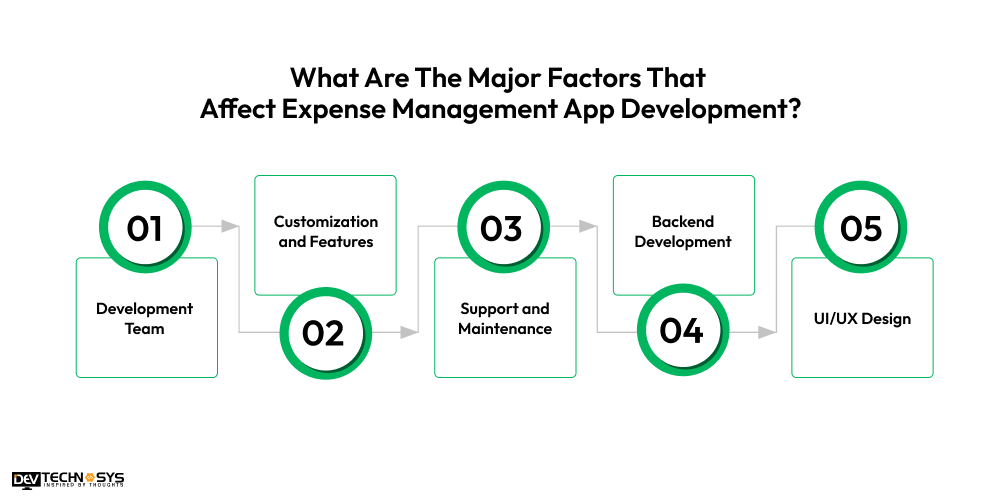
1. Development Team
The success of an expenditure management app is greatly influenced by the development team. Robust functioning, intuitive design, and effective coding are guaranteed by a talented group of engineers, designers, and testers.
Their proficiency in integration, security, and customization has a direct impact on the app’s scalability, user experience, performance, and capacity to satisfy business requirements.
| Developer’s Location | Cost Estimation |
| Asia Pacific | $8,000 – $15,000 |
| North America | $15,000 – $20,000 |
| Eastern Europe | $13,000 – $18,000 |
| Western Europe | $16,000 – $25,000 |
2. Customization and Features
The development process is directly impacted by the quantity and complexity of features. While automated approval workflows, multi-currency compatibility, accounting software connection, and AI-driven analytics are examples of advanced features, basic functions include tracking expenses, scanning receipts, and reporting.
The time and expense of development increase with the number of features included.
| Features | Cost Estimation |
| Core Features | $8,000 – $12,000 |
| Advanced Features | $15,000 – $20,000 |
3. Support and Maintenance
The long-term viability of cost management software depends on support and upkeep. The software is kept secure, functional, and compatible with new technologies through regular updates, bug fixes, security patches, and feature improvements.
Without adequate support, the application may eventually experience problems with performance, security flaws, and user unhappiness.
| Maintenance Phase | Cost Estimation |
| Simple Maintenance Phase | $2,000 – $4,000/year |
| Complex Maintenance Phase | $8,000 – $10,000/year |
4. Backend Development
For an expenditure management app to be functional, and scalable, backend development is essential. It manages user authentication, security, integrations, data processing, and storage.
While a poorly built backend might result in slow performance and system vulnerabilities, a well-planned backend guarantees seamless operation, real-time updates, and dependable data management.
| Backend Development | Cost Estimation |
| Basic Backend Process | $10,000 – $18,000 |
| Premium Backend Process | $20,000 – $28,000 |
5. UI/UX Design
User adoption is significantly influenced by the app’s design, especially its user interface and user experience. It takes talented designers to create a straightforward, user-friendly, and aesthetically pleasing design, which raises the entire mobile app development cost.
Prioritizing a smooth user experience raises the investment but guarantees more client happiness.
| Design Quality | Cost Estimation |
| Basic Design | $8,000 – $12,000 |
| Complex Design | $15,000 – $22,000 |
5 Monetization Techniques of Expense Management Apps
Apps for managing expenses can make money using a variety of monetization techniques. These strategies allow expenditure management apps to provide flexibility for a range of customer requirements while generating steady revenue.
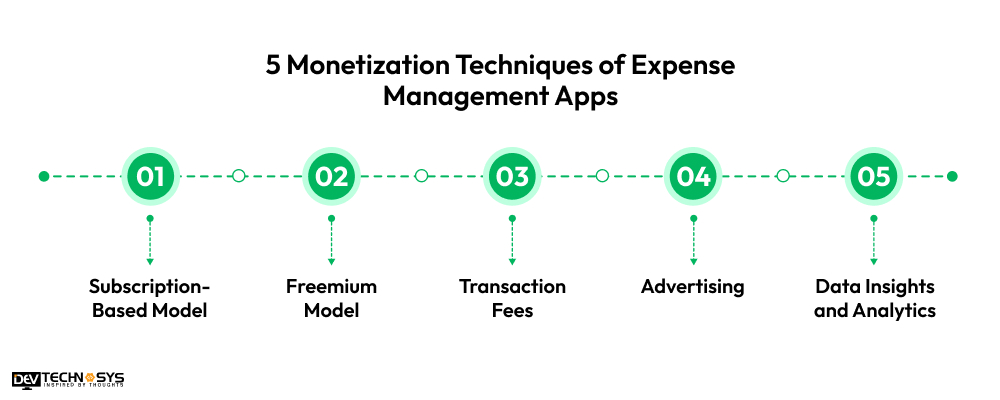
1. Subscription-Based Model
The use of a subscription-based pricing plan is among the most widely used monetization strategies. To use the app, businesses or individuals must pay a monthly or annual recurring cost. Pricing tiers are frequently determined by features, transaction volume, or user count.
Advanced features like bespoke reporting, increased security, and accounting tool integrations are sometimes included in premium services.
2. Freemium Model
Under the freemium business model, users can access premium features by upgrading to a paid version of the software, which is free to use with limited functionality. By providing free functionality for regular customers and enticing them to upgrade to subscription plans for more sophisticated features like custom analytics or third-party software integrations, this model initially draws a large user base.
Over time, this approach is effective at increasing user acquisition and conversion.
3. Transaction Fees
For processing payments, receipts, or reimbursements, for example, certain expenditure management apps charge a nominal fee for every transaction. Expense app like Expensify that interface with payment or credit card systems are especially likely to do this.
The best app to manage expenses that process a lot of transactions, transaction fees can be a steady source of income.
4. Advertising
Ads may be present in free versions of the app, bringing in money from companies trying to market goods or services to the right audience. Advertisements may take the shape of sponsored content, banner ads, or video ads.
According to the mobile app development company, ads can bring in passive revenue for the app developer, but they are less disruptive than paid subscriptions.
5. Data Insights and Analytics
Similar apps like Expensify make money off of anonymized and aggregated user data by giving businesses useful business insights. This could involve an analysis of consumer behavior, spending trends, or market trends.
Companies can acquire comprehensive analytics and reports to help them streamline their financial operations.
Conclusion
Sadly, we are at the last stage of this blog. But we are happy to clear all your confusion and misunderstanding about how to build an app like Expensify. We also explored which type of features you have to install in your app or software. With the help of these features, you can reach higher success and enhance the business or user experience. Lastly, we provide the best money-making strategies that help businesses to generate new income sources.
So, if you are interested in building a personal expense management app. You can reach out to our expense management app development company to receive high-quality mobile app solutions.
Frequently Asked Questions
Q1. How Much Does It Cost To Build An App Like Expensify?
It usually costs between $8,000 and $25,000 to make an app like Expensify, depending on the features, platform (iOS, Android, or Web), integrations, complexity, and location and experience of the development team.
Q2. How Much Time Does It Take To Make An App Like Expensify?
Depending on the intricacy of features, integrations, platform compatibility, testing, and the resources and experience of the development team, creating an app like Expensify usually takes 6 to 10 months.
Q3. Which Technologies Are Used To Develop An App Like Expensify?
It includes various programming technologies that are used to create an app like Expensify:
- Java
- PHP
- Kotlin
- Swift
- Flutter
Q4. How Can I Monetize My Expense Management Apps?
There are many monetization techniques that allow businesses to generate higher revenue streams:
- Subscription Plans
- Freemium Model
- Transaction Fees
- Partnerships
- Advertising
